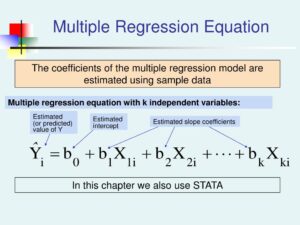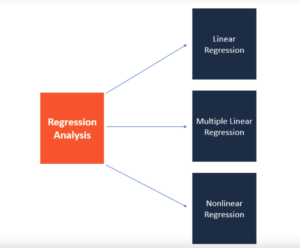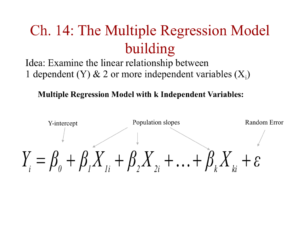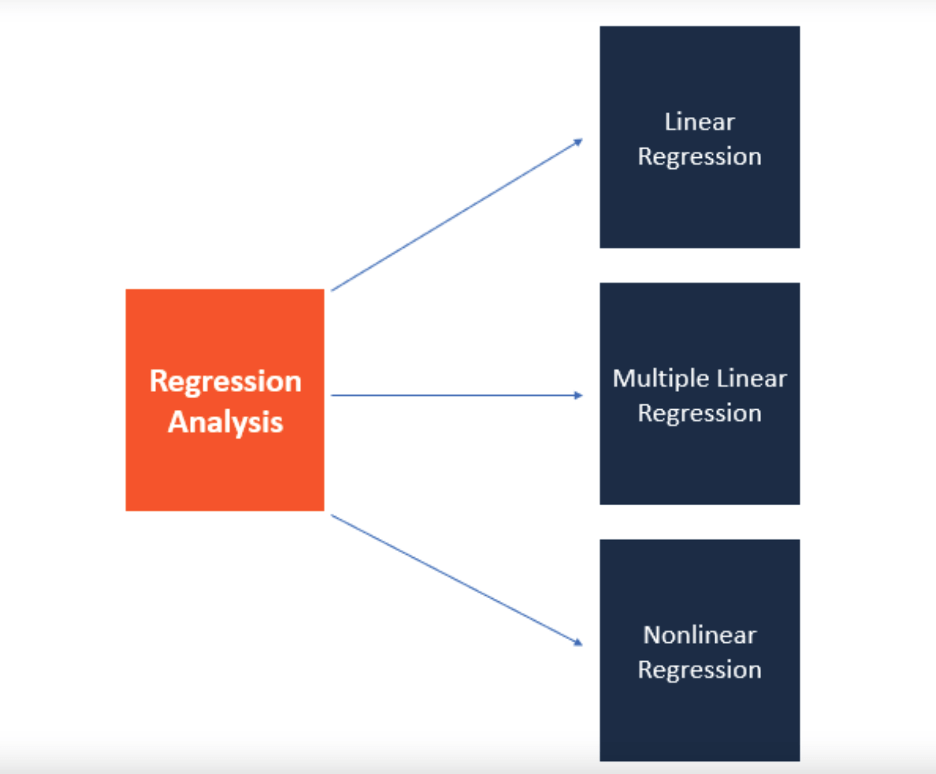
In the era of big data, decision-making in modern industries has been revolutionized by the use of advanced analytical techniques. One of the most powerful tools in this domain is multiple regression analysis. This statistical method allows businesses to understand complex relationships between variables and make informed decisions based on data. This article explores how multiple regression analysis is shaping data-driven decision making across various sectors, highlighting its significance and applications.
Understanding Multiple Regression Analysis
Multiple regression analysis is a statistical technique used to understand the relationship between one dependent variable and two or more independent variables. Unlike simple regression, which examines the relationship between two variables, multiple regression accounts for the influence of multiple predictors simultaneously.
In essence, multiple regression allows researchers and analysts to:
- Identify Relationships: Determine how different factors are related to the outcome variable.
- Predict Outcomes: Forecast future trends based on current and historical data.
- Control for Confounding Variables: Assess the impact of specific variables while controlling for the influence of others.
The Role of Multiple Regression Analysis in Data-Driven Decision Making
1. Enhancing Forecast Accuracy
In industries such as finance, retail, and manufacturing, accurate forecasting is crucial for strategic planning. Multiple regression analysis helps in predicting sales, market demand, and financial outcomes by considering various influencing factors. For example, a retail chain might use multiple regression to predict future sales based on variables like marketing spend, seasonal trends, and economic indicators. By incorporating these variables into their forecasting models, businesses can make more accurate predictions and allocate resources more effectively.
2. Optimizing Marketing Strategies
Marketing departments leverage multiple regression analysis to evaluate the effectiveness of their campaigns. By analyzing how different marketing activities (e.g., online ads, promotions, and social media engagement) impact sales, companies can identify which strategies yield the best return on investment. For instance, a company may use multiple regression to determine how different advertising channels contribute to overall sales, enabling them to optimize their marketing budget and focus on high-impact strategies.
3. Improving Product Development
Product development teams use multiple regression to assess the impact of various features on product performance. By analyzing customer feedback, feature usage, and sales data, companies can identify which product attributes are most important to consumers. For example, a smartphone manufacturer might use multiple regression to determine how factors like battery life, screen size, and camera quality influence customer satisfaction and sales. This insight helps in designing products that better meet customer needs.
4. Enhancing Operational Efficiency
Operational efficiency is critical for organizations seeking to reduce costs and improve productivity. Multiple regression analysis helps in identifying factors that affect operational performance, such as production costs, workforce productivity, and supply chain variables. By understanding these relationships, companies can implement targeted improvements. For example, a manufacturing company might use multiple regression to analyze how different factors, like equipment maintenance schedules and labor shifts, impact production efficiency, leading to optimized operations.
5. Supporting Financial Management
In the financial sector, multiple regression analysis is used to model and predict financial metrics such as stock prices, interest rates, and investment returns. Financial analysts use this technique to evaluate how various economic indicators and market conditions influence financial outcomes. For instance, an investment firm might use multiple regression to assess the impact of macroeconomic factors on stock performance, aiding in portfolio management and risk assessment.
Applications of Multiple Regression Analysis in Different Industries
Healthcare
In healthcare, multiple regression analysis is used to study the impact of various factors on patient outcomes. Researchers might examine how variables such as treatment methods, patient demographics, and lifestyle choices influence recovery rates. This analysis helps in developing personalized treatment plans and improving overall patient care.
Real Estate
Real estate professionals use multiple regression to analyze factors affecting property values, such as location, size, and amenities. By understanding how these variables influence real estate prices, investors and developers can make informed decisions about property investments and development projects.
Education
Educational institutions apply multiple regression analysis to evaluate factors affecting student performance, such as teaching methods, class sizes, and student demographics. This analysis helps in designing effective educational programs and interventions to enhance student outcomes.
Best Practices for Implementing Multiple Regression Analysis
- Ensure Data Quality: Accurate and comprehensive data is crucial for reliable regression analysis. Clean and preprocess data to eliminate errors and inconsistencies.
- Select Relevant Variables: Choose independent variables that have a meaningful impact on the dependent variable. Avoid including irrelevant or highly correlated variables.
- Validate Models: Use techniques such as cross-validation to ensure the robustness and generalizability of the regression models.
- Interpret Results Carefully: Understand the limitations of the analysis and consider potential confounding factors that may affect the results.
Conclusion
Multiple regression analysis is a cornerstone of data-driven decision-making in modern industries. Its ability to analyze complex relationships between multiple variables enables businesses to make informed decisions, optimize strategies, and improve performance across various sectors. By leveraging this powerful analytical tool, organizations can gain valuable insights, enhance their forecasting accuracy, and achieve a competitive edge in their respective markets. As data continues to play a pivotal role in business success, mastering multiple regression analysis will remain essential for effective decision-making and strategic planning.



